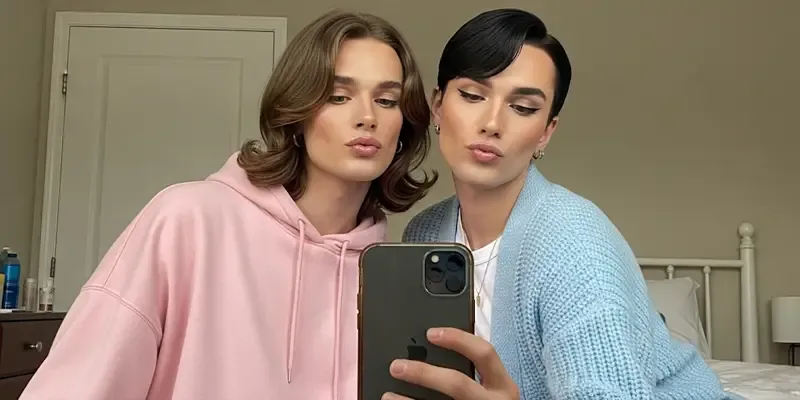
Ever scrolled TikTok or Reddit and spotted a cute, soft-looking guy in a skirt with eyeliner sharp enough to cut glass — and thought, wait… is that a girl? Nope… that’s a femboy?
Femboys are guys (usually) who lean hard into feminine vibes — think skirts, thigh-high socks, makeup, and a confidence that turns heads. They don’t all identify the same way gender-wise, and they’re not a “one look fits all” deal. Some go pastel-princess sweet, some go edgy e-girl chic, some are more subtle — but all of them play with breaking the old “boys dress like this, girls dress like that” rulebook.
Why are they blowing up right now? Well, it’s part internet trend, part fashion evolution, and part people just realizing gender expression can be fun. Add in anime influence, LGBTQ+ visibility, and a healthy dose of online thirst, and you’ve got yourself a whole subculture that’s here to stay.
So… What Exactly is a Femboy?
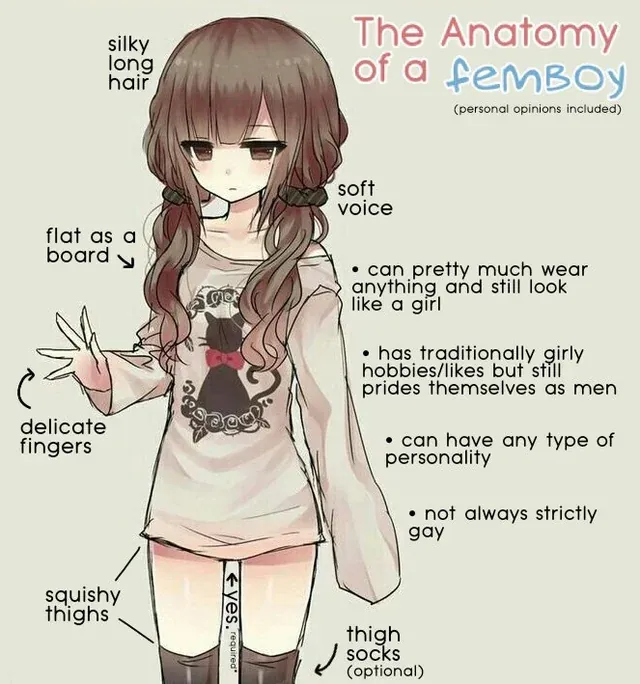
At its core, “femboy” is just a slangy, internet-born term for someone — usually a guy — who embraces traditionally feminine looks, mannerisms, or vibes without necessarily identifying as a woman.
We’re talking soft features, playful outfits, maybe some eyeliner or lipstick, and a willingness to wear whatever feels cute, no matter what the “boys’ section” says.
Some femboys are all about the aesthetic — they love the fashion, the hair, the makeup — but their gender identity stays the same. Others weave it into a deeper part of who they are, blending it with being non-binary, genderfluid, or somewhere else on the spectrum.
Here’s the key thing: being a femboy is about expression, not a set-in-stone identity. It’s not the same as being transgender, it’s not tied to any one sexuality, and it’s definitely not about “trying to be a girl.” It’s about playing with the idea of what “masculine” and “feminine” even mean — and looking damn good while doing it.
Why Are Femboys Suddenly Everywhere?
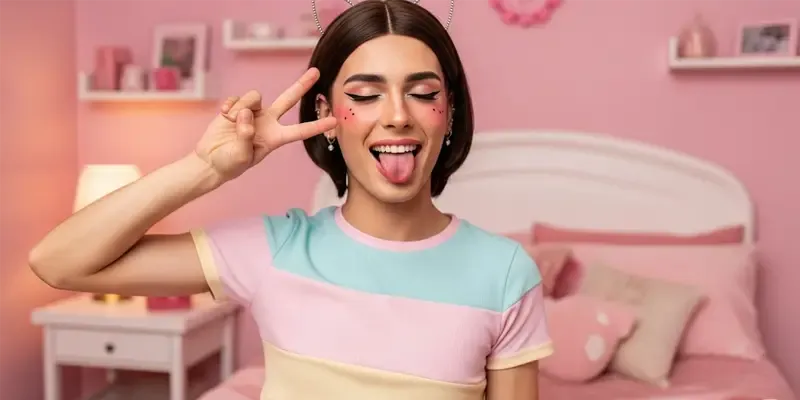
Short answer? The internet, baby.
Longer answer? Femboys hit the perfect sweet spot between style, personality, and a little bit of rebellion. They’re visually striking (you notice a cute boy in thigh-highs instantly), they’ve got confidence, and they live in a cultural moment where people are more open to seeing gender as a spectrum instead of a box.
A few things fueling the hype:
- Social media thirst traps – TikTok, Instagram, and Twitter (yeah, we’re still calling it Twitter) have made it way easier for femboys to showcase their looks to massive audiences. Cute outfits + good lighting + a playful wink = instant virality.
- Anime & gaming culture – Characters like Astolfo from Fate/Apocrypha or Felix from Re:Zero made the “pretty boy in a skirt” trope mainstream in fandom spaces, and fans took notes.
- Fashion freedom – Gen Z isn’t waiting for permission to wear what they want. Skirts, chokers, thigh-high socks — if it’s cute, it’s fair game.
- Breaking norms (and getting reactions) – There’s something magnetic about someone who unapologetically challenges what “masculine” is supposed to look like. Whether people love it or hate it, they can’t stop talking about it.
And here’s the tea — femboys aren’t just popular with LGBTQ+ audiences. Plenty of straight women and men find the mix of softness and confidence insanely attractive. That wide appeal keeps the trend from being just a niche internet thing — it’s slipping into mainstream fashion and conversation.
From here, we’ll dive deeper into the history, culture, and style of femboys, unpacking the fashion choices, media influences, and the real conversations happening behind the aesthetic.
What is a Femboy? Delving into the Definition
In the kaleidoscope of modern gender expressions, "femboys" have emerged as a fascinating and increasingly visible phenomenon. This term generally refers to individuals, often male-identified, who adopt feminine characteristics in their appearance and behavior, challenging traditional gender norms.
The curiosity about femboys is not just a fleeting trend; it's part of a broader societal shift towards embracing gender fluidity and breaking down the rigid barriers of male and female stereotypes.
The rise in popularity of femboys can be traced back to various factors, including the growing visibility of gender-diverse communities in media and online platforms. Websites like Reddit and Tumblr have thriving communities where femboys share their experiences and fashion styles, contributing to a more inclusive understanding of gender presentation.
Moreover, the influence of Japanese anime culture, with its androgynous characters, has also played a role in popularizing the femboy aesthetic.
This exploration into femboy culture is more than just about fashion or trends; it delves deep into the realms of identity, self-expression, and acceptance.
By understanding femboys, we open up a dialogue on the fluid and diverse nature of gender, moving away from binary classifications and towards a spectrum where individual expression is celebrated.
In this article, we'll explore the multifaceted world of femboys - their history, culture, fashion, and the challenges they face in a society.
"Femboy" is a term that has gained traction in recent years, but its definition can vary depending on context and individual perspective. At its simplest, a femboy is someone typically male-identified who embraces characteristics traditionally seen as feminine. This can manifest in fashion choices, such as wearing skirts or makeup, or through behavior and mannerisms that society typically associates with femininity.
The beauty of the term "femboy" lies in its flexibility. For some, it's purely an aesthetic or fashion choice – a way to express themselves through their appearance without it necessarily being tied to their gender identity. For others, being a femboy is an integral part of their identity, reflecting a deeper connection with femininity that goes beyond just clothes or style.
This distinction is crucial in understanding the femboy phenomenon. It's not just about the clothes someone wears; it's about challenging and redefining traditional gender norms. A femboy might identify as cisgender, transgender, non-binary, or any other gender identity – or might not adhere to any specific gender label at all. Their expression of femininity is a personal journey and one that can vary greatly from person to person.
In exploring the femboy identity, it's essential to approach it with an open mind and understanding that this is a diverse and nuanced area of gender expression.
The Evolution and Cultural Significance of Femboys
The concept of femboys, while seemingly modern, has roots that trace back through history. This evolution mirrors society's changing attitudes towards gender expression and identity.
Historical Roots and Progression
Historically, crossing gender norms in appearance and behavior was often marginalized. However, over centuries, various cultures have seen examples of men adopting traditionally feminine styles, from the "dandies" of 18th-century Europe to the glam rock era of the 1970s.
The past few decades have seen a significant shift. With the rise of LGBTQ+ rights movements and greater awareness of gender diversity, the femboy identity has gained more visibility and acceptance.
Influence in Media and Pop Culture
In recent years, media representation has played a pivotal role in normalizing femboys. From anime characters with fluid gender presentations to celebrities challenging traditional fashion norms, these representations have broadened public perceptions of masculinity and femininity.
The internet and social media platforms like Reddit, Instagram, and TikTok have further amplified this visibility. Online communities offer safe spaces for femboys to express themselves, share experiences, and connect with others.
Astolfo, the Iconic Femboy of Anime
Astolfo, a character from the Japanese light novel series "Fate/Apocrypha", part of the larger "Fate" franchise, has become an iconic figure often associated with the femboy archetype in anime. With an androgynous and flamboyantly feminine appearance, Astolfo breaks away from traditional male character designs, embodying a blend of both masculine and feminine traits. This character has garnered significant attention and popularity in anime communities, often sparking discussions about gender norms and representation in media.
Astolfo's character is distinguished by his playful and whimsical personality, often dressing in traditionally feminine attire, which challenges and defies conventional gender expectations. His portrayal in "Fate/Apocrypha" and subsequent appearances in other "Fate" series media has made him a symbol of gender fluidity in anime, resonating with fans who appreciate diverse and non-traditional representations of gender expression.
The character of Astolfo highlights the evolving landscape of character design and storytelling in modern anime, where the exploration of gender identity and expression has become more nuanced and inclusive. Through Astolfo and similar characters, anime continues to contribute to the broader cultural conversation about gender and identity, reflecting a growing acceptance and fascination with non-binary and fluid gender expressions in popular media.
The Role of Online Communities
Online forums and social media platforms have become vital in shaping femboy culture. They provide not just visibility but also a sense of community and support, allowing individuals to explore and express their identities in a non-judgmental environment.
Popular platforms: Discord, reddit, twitter (X).
These platforms have also facilitated a broader conversation about gender fluidity, challenging the traditional binary and encouraging acceptance of diverse gender expressions.
The journey of femboys from the fringes to more mainstream visibility is a reflection of society's growing understanding and acceptance of gender diversity. It underscores the importance of representation in media and the power of online communities in shaping cultural norms and attitudes.
Fashion and Aesthetics: The Distinctive Style of Femboys
Femboy fashion is a unique blend of masculine and feminine elements, creating a distinctive and expressive style. Let's have an in-depth look at what femboys typically wear and the aesthetics they embody.
Defining Femboy Fashion
Femboy fashion is a dynamic and expressive style that defies traditional gender norms. Key characteristics include:
Blending of Masculine and Feminine Elements: Femboy fashion often combines masculine and feminine clothing pieces, like pairing a skirt with a masculine-cut jacket.
Emphasis on Personal Expression: There is no one-size-fits-all in femboy fashion; it’s deeply personal and varies greatly from individual to individual.
Popular Garments: Common items include skirts, thigh-high socks, and oversized sweaters. These pieces allow for a playful and creative expression of gender fluidity.
Bold and Soft Colors: The color palette often features a mix of bold and soft hues, allowing for both striking and gentle expressions.
Comfort and Confidence: Above all, comfort and personal confidence drive femboy fashion choices, making each outfit uniquely tailored to the individual wearing it.
This fashion style is not just about the clothes; it’s a form of self-expression and a statement about the fluid nature of gender.
Common Clothing Choices in Femboy Fashion
Femboy fashion showcases a variety of clothing choices that challenge traditional gender norms. Key items include:
Skirts: A staple in femboy wardrobes, skirts come in various lengths and styles, from mini to midi, often paired with masculine tops to create a blend of gender expressions.
Thigh-High Socks: Popular for their aesthetic appeal, thigh-high socks are often worn with shorts or skirts, adding a playful and youthful touch to the outfit.
Oversized Sweaters: Providing comfort and a touch of androgyny, oversized sweaters are a common choice, offering a relaxed yet stylish look.
Crop Tops: These tops, traditionally seen as feminine, are embraced for their ability to challenge norms and flaunt a unique style.
Layering and Mix-and-Match: Femboy fashion frequently involves creative layering and mixing of traditionally male and female clothing items, enabling a unique personal expression.
These clothing choices are more than just a fashion statement; they represent a move towards breaking down gender barriers and redefining personal style in a more inclusive and expressive way.
Accessorizing the Femboy Way: Adding Unique Touches
In femboy fashion, accessories are pivotal in creating a distinctive look. Key accessories include:
Chokers: These neck accessories range from subtle to bold, often acting as a statement piece in a femboy outfit.
Cat Ears: Popularized by anime culture, cat ears add a playful and whimsical element, often seen in headbands or clips.
Thigh Strap Garters: These accessories, worn around the thigh, add an edgy and provocative touch to the outfit, often paired with shorts or skirts.
Each of these accessories contributes to the individualistic and eclectic nature of femboy fashion, allowing for personal expression beyond traditional fashion norms.
Hair and Makeup: The Artistic Expressions of Femboy Fashion
In femboy fashion, hair and makeup are not just accessories but integral elements of self-expression. Here's a detailed look at how they are utilized:
Hair Styling:
Hair is a canvas for personal expression in femboy fashion. Styles range from soft and long, often with curls or waves, to sharp, edgy cuts. Vibrant hair colors, like pastel shades or bold hues, are popular, offering a playful and expressive dimension. The choice of hairstyle can vary greatly, reflecting the individual's unique approach to their femboy identity.
Wigs: A Versatile Element in Femboy Fashion
Wigs hold a special place in femboy fashion, offering the flexibility to experiment with different hair lengths, colors, and styles without the commitment of permanent changes.
They range from natural-looking pieces that enhance one's existing features to more dramatic and fantastical options that allow for complete transformation.
Wigs also provide an opportunity for those who may not be able to grow their hair out, due to personal or societal reasons, to still partake in the long-haired aspect of femboy aesthetics.
The use of wigs underscores the playful and experimental nature of femboy fashion, further blurring the traditional boundaries of gendered appearance.
Makeup Techniques:
Makeup in femboy fashion tends to focus on accentuating natural features while adding creative flair. Common approaches include:
Foundation and Concealer: Used subtly for a smooth, even complexion. Finding the correct foundation might not be an easy task, especially for beginners, and this is why we created an article on choosing the right foundation for you.
Eye Makeup: A key focus, with eyeliner used to create anything from a delicate, subtle line to a bold wing. Eyeshadows tend toward lighter, shimmering shades, but adventurous looks with brighter colors or intricate designs are also common.
Mascara: Often used to enhance and open up the eyes, giving a more expressive look.
Lip Colors: While some prefer natural tones or glosses, others might opt for bolder lip colors to make a statement.
Highlighting and Contouring: Used with a lighter hand than in more dramatic makeup styles, aiming to softly define features rather than reshape them.
Egirl Influence: The 'egirl' aesthetic, popularized on platforms like TikTok, also influences femboy makeup styles. This includes heart stamps under the eyes, exaggerated blush across the nose and cheeks, and graphic eyeliner.
Egirl makeup adds a playful, youthful vibe, blending modern trends with the femboy aesthetic.
Personal Touches:
Ultimately, the choice in hair and makeup is deeply personal in femboy fashion. Each individual tailors their look to fit their identity and mood, making each style unique.
Through these creative expressions in hair and makeup, femboys challenge traditional gender norms and showcase the diversity and fluidity of gender expression in today's fashion landscape.
Masks and Mystery: An Unconventional Accessory in Femboy Fashion
Masks have emerged as a fascinating accessory in femboy fashion, serving both aesthetic and symbolic purposes.
Aesthetic Appeal: Masks add an element of intrigue and mystery to the femboy look. They can range from simple cloth masks to elaborate designs that incorporate lace, patterns, or other decorative elements. In some cases, masks are used to complement an outfit, adding a final touch to a carefully curated look.
Privacy and Personal Comfort: For many femboys, masks serve a practical purpose in maintaining privacy and comfort, especially for those who are not publicly open about their gender expression. Wearing a mask can provide a sense of security, allowing individuals to express their femininity while protecting their identity, especially important for those concerned about recognition by friends, family, or the public.
Navigating Social Spaces: Masks enable femboys to navigate social spaces where their full expression might not be accepted or safe. It's a way to balance personal expression with societal constraints, offering a compromise between showcasing their identity and maintaining privacy in certain environments.
Influence from Pop Culture and Subcultures: The use of masks in femboy fashion is also influenced by various subcultures and pop culture elements, including anime, where characters often wear masks to portray different identities or emotional states.
Expression of Personality: Masks allow femboys to express aspects of their personality in a non-verbal way. The choice of mask can reflect one's mood, interests, or the persona they wish to present to the world.
Community and Belonging: In some cases, wearing a mask can also be a sign of belonging to the femboy community, serving as a visual cue that connects individuals within this group.
Identity and Expression: Gender, Sexuality, and Femboys
The identity and sexual orientation of femboys are diverse and cannot be generalized. Here's an in-depth look:
Gender Identity Among Femboys: While femboys predominantly identify as male, their expression of femininity is separate from their gender identity. They often do not identify as female but rather enjoy expressing femininity while still identifying with their male gender. However, this can vary, and some may identify as non-binary or gender-fluid.
Sexual Orientation: The sexual orientation of femboys is varied. Being a femboy does not inherently correlate with any specific sexual orientation. They can be heterosexual, homosexual, bisexual, pansexual, or asexual. The term 'femboy' is purely about gender expression and not indicative of sexual preference. The same goes for non-femboys wondering if being attracted to femboy is gay.
Straight Femboys: The existence of straight femboys challenges the stereotype that femininity in men is linked to homosexuality. Straight femboys are attracted to women but enjoy expressing themselves in traditionally feminine ways. Their presence is significant as it broadens the understanding of how gender expression and sexual orientation are independent of each other.
This diversity reflects the complexity of gender and sexuality, emphasizing that the way someone chooses to express their gender does not necessarily define their sexual orientation.
Addressing Common Questions and Misconceptions: The Term 'Femboy'
Is 'Femboy' a Slur or Derogatory?
The term femboy is not inherently derogatory but is a self-adopted label within the community. It's used to describe a specific gender expression. However, like many terms related to gender and sexuality, it can be misused in a derogatory manner by those outside the community. Context and intention are crucial in determining whether it's being used offensively.
Potential for Misuse and Offense: Misunderstandings about the term often arise when used by individuals who are not part of the community, sometimes leading to its use in a demeaning or mocking way.
It's important for outsiders to understand the term's meaning within the community and to use it respectfully.
Is 'Femboy' Transphobic?
The term itself is not transphobic, as it represents a form of gender expression rather than a gender identity. However, conflating femboys with transgender individuals can be problematic, as it overlooks the distinct differences between gender expression and gender identity. It's crucial to recognize and respect these differences.
Clarifying the Difference Between Femboy and Transgender Identities
Understanding the distinction between femboy and transgender identities is crucial in respecting individual identities:
Femboy Identity: The term 'femboy' primarily refers to a mode of gender expression. It is typically used by individuals who are male-identified and choose to express themselves in ways that are traditionally considered feminine. This expression is about appearance and behavior, not gender identity.
Transgender Identity: Being transgender, on the other hand, is about one's gender identity not aligning with the sex they were assigned at birth. A transgender person's identity might involve transitioning to live as the gender with which they identify, which can include changing physical appearance, name, and pronouns.
Key Distinction: The fundamental difference lies in identity versus expression. A femboy does not necessarily question their male gender identity, but chooses to express themselves in a feminine way.
A transgender person's gender identity is different from the sex they were assigned at birth, which is a deeper aspect of their core sense of self.
This distinction highlights the diversity within gender expressions and identities, emphasizing the importance of understanding and respecting each person's unique experience and self-identification.
Femboy Fridays
"Femboy Friday" is a phenomenon within the online femboy community, where individuals celebrate and embrace femboy culture each week on Friday. The origins of "Femboy Friday" are a bit unclear, but it seems to have organically emerged from online forums and social media platforms where femboys and their supporters congregate. On this day, members of the community often post pictures, share stories, and engage in discussions about femboy fashion, identity, and experiences.
The significance of "Femboy Friday" lies in its celebration of gender expression diversity and the building of a supportive community. It's a day that encourages self-expression and visibility for femboys, fostering a sense of solidarity and pride within the community. This weekly observance has become a staple in the femboy community, providing a regular opportunity for connection, empowerment, and the breaking down of gender stereotypes.
What is the opposite of a femboy?
The opposite of a femboy, in terms of gender expression, could be considered a "tomboy." While a femboy is typically someone male-identified who embraces traditionally feminine traits, a tomboy is often someone female-identified who adopts traits considered traditionally masculine. This includes preferences in clothing, activities, and behaviors. However, it's important to note that these terms are fluid and can vary in interpretation. Just as femboys challenge traditional masculine norms, tomboys challenge traditional feminine norms, both contributing to a broader understanding of gender expression.
Do Femboys Have a Flag?
Generally, there isn't a widely recognized or official flag specifically for the femboy community. However, it's common for subcultures within the LGBTQ+ spectrum to create symbols or flags for representation and identity, and currently the most used and recognized is the flag above. Members of the femboy community, like other gender and sexuality groups, may create and adopt their own symbols or flags to express their identity and solidarity. These symbols can vary and might not be universally recognized across the entire community. The creation of such flags is often a grassroots effort, reflecting the community's diverse experiences and expressions.
Bottom Line - Embracing the Femboy Identity and Its Cultural Impact
The essence of being a femboy lies in the freedom and courage to express one's gender in a way that transcends traditional norms. It's about embracing femininity within a male-identified context, challenging societal expectations, and enriching the tapestry of gender expression. The cultural impact of femboys is significant; they contribute to the evolving conversation on gender fluidity and acceptance, breaking down barriers and expanding our understanding of identity.
As we continue to witness the growth of femboy culture, it's essential to foster an environment of understanding and acceptance, celebrating the diverse ways in which individuals can express their true selves. This journey towards inclusivity not only enriches the femboy community but also encourages a broader societal shift towards embracing all forms of gender expression.
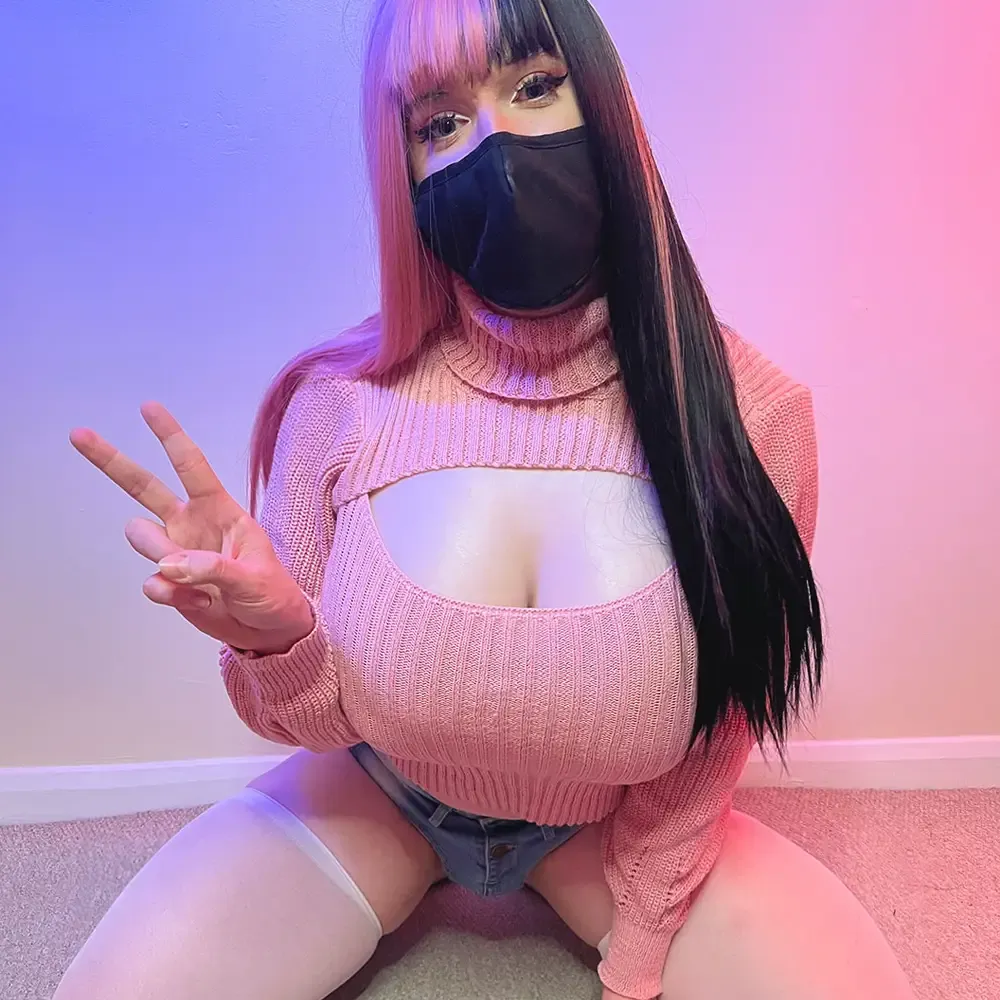

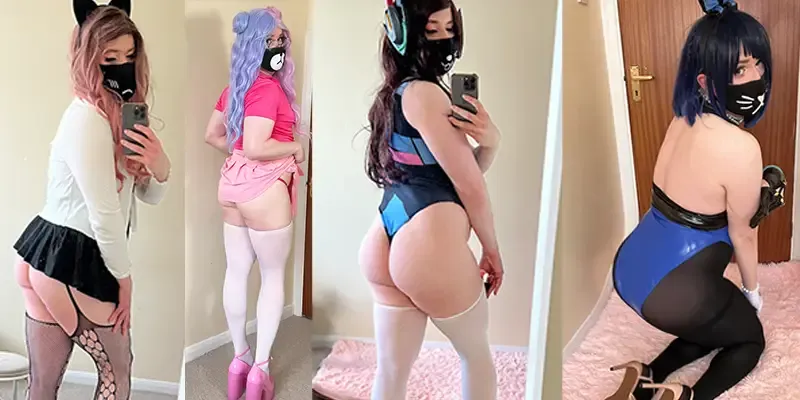
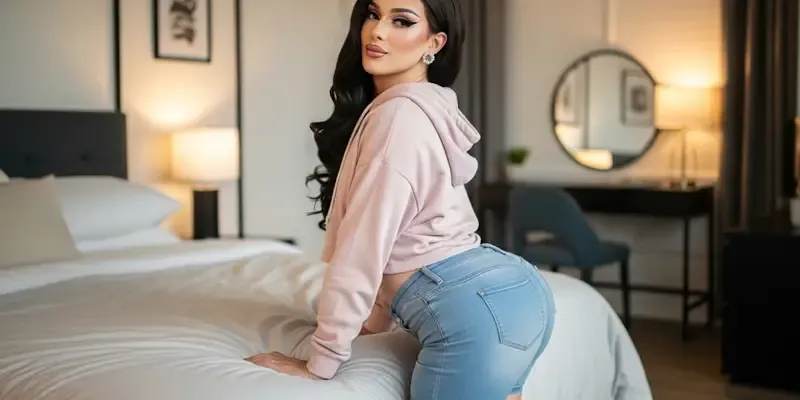

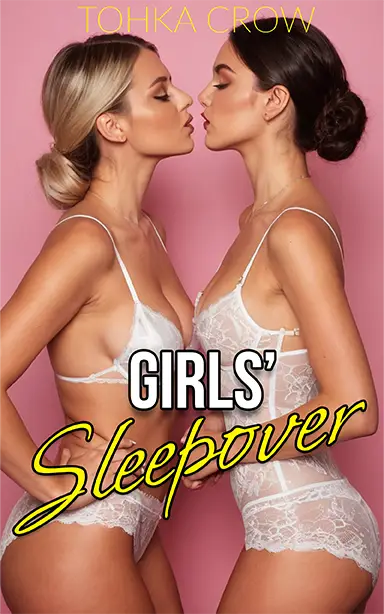
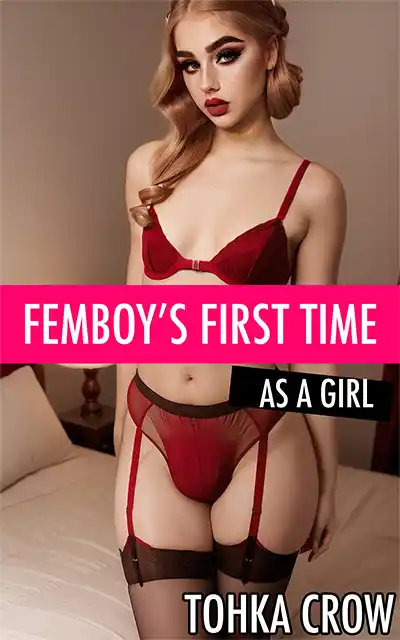

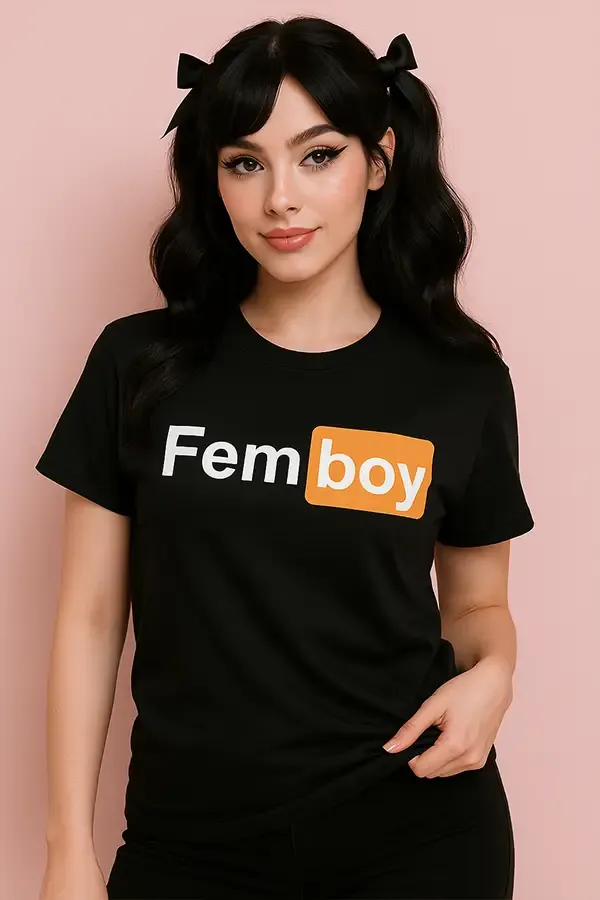
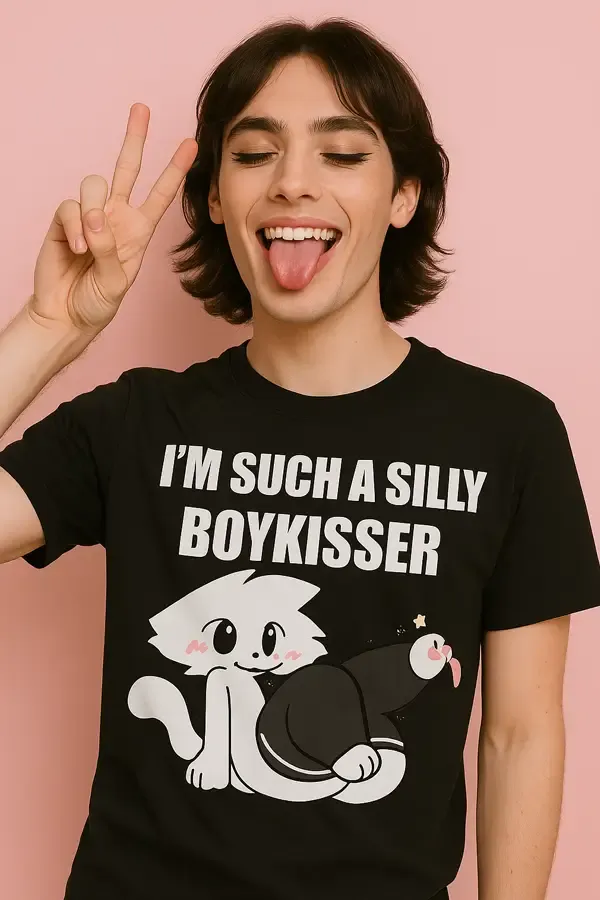
Comments (0)
No comments yet. Be the first to leave one!